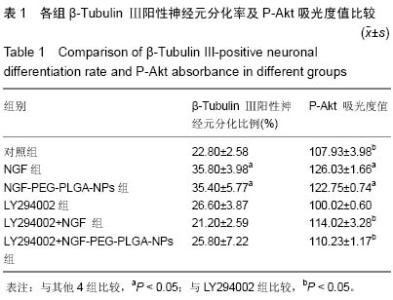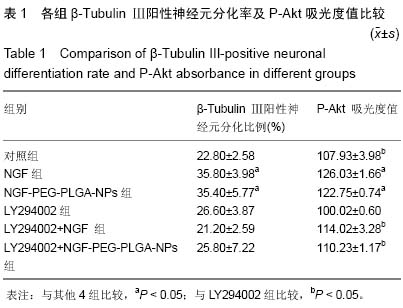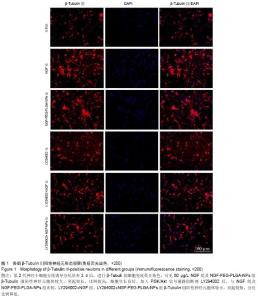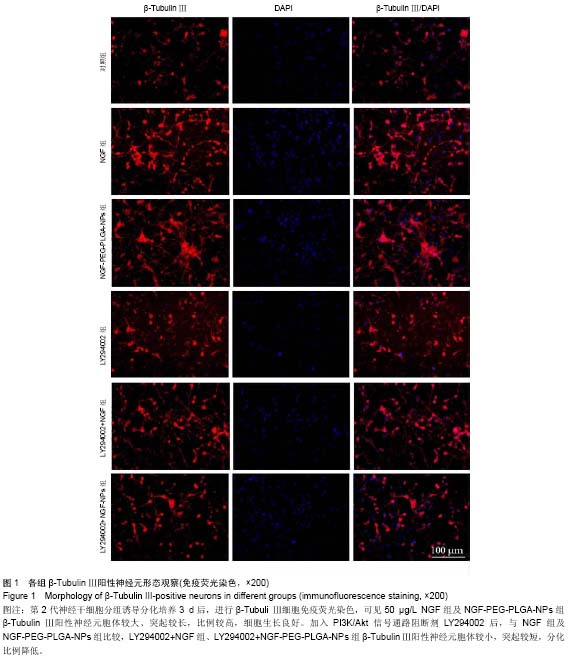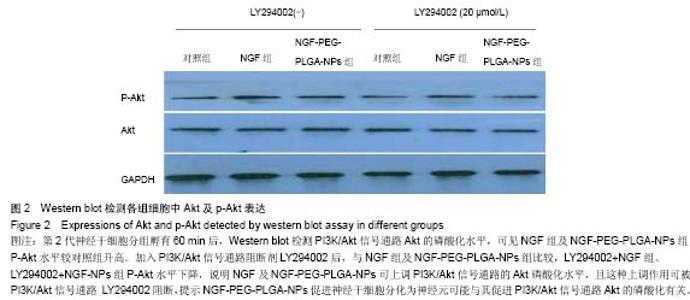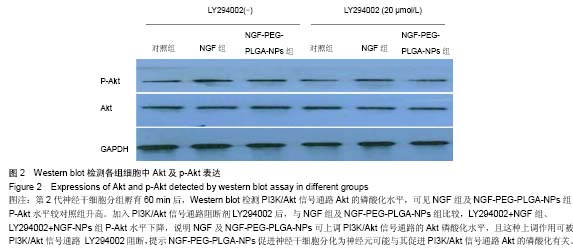| [1] Kuo YC, Shih KH, Yang JT. Capillary electrophoresis of bone marrow stromal cells with uptake of heparin-functionalized poly(lactide-co-glycolide) nanoparticles during differentiation towards neurons .Electrophoresis. 2010;31(2):315-323.
[2] Wuhanqimuge, Itakura A, Matsuki Y, et al. Lysophosphatidylcholine enhances NGF-induced MAPK and Akt signals through the extracellular domain of TrkA in PC12 cells. FEBS Open Bio. 2013;3:243-251.
[3] Cheng KK, Yeung CF, Ho SW, et al. Highly stabilized curcumin nanoparticles tested in an in vitro blood-brain barrier model and in Alzheimer's disease Tg2576 mice. AAPS J. 2013;15(2):324-336.
[4] Zhang L, Han L, Qin J, et al. The use of borneol as an enhancer for targeting aprotinin-conjugated PEG-PLGA nanoparticles to the brain. Pharm Res. 2013;30(10):2560- 2572.
[5] Rocha S. Targeted drug delivery across the blood brain barrier in Alzheimer's disease. Curr Pharm Des. 2013;19(37): 6635-6646.
[6] 包国庆,龙大宏,陈艳,等. 载神经生长因子纳米药物体外诱导PC12细胞的药效[J].中国组织工程研究, 2013, 17(16): 2891- 2898.
[7] Cuello AC, Bruno MA, Allard S, et al. Cholinergic involvement in Alzheimer's disease. A link with NGF maturation and degradation. J Mol Neurosci. 2010;40(1-2):230-235.
[8] Mufson EJ, Counts SE, Perez SE, et al. Cholinergic system during the progression of Alzheimer's disease: therapeutic implications. Expert Rev Neurother. 2008;8(11):1703-1718.
[9] 谷海刚,龙大宏,宋存先,等.神经生长因子缓释微球移植对AD模型鼠基底前脑ChAT阳性神经元的保护作用[J].解剖学研究, 2008, 30(1): 47-51.
[10] 张莹,张朝东,杨军,等. NGF-PBCA-NP的制备与性能评价及其对体外AD细胞模型的保护作用[J]. 中华神经医学杂志,2012, 11(3): 238-241.
[11] Zhang L, Zhou Y, Li G, et al. Nanoparticle mediated controlled delivery of dual growth factors. Sci China Life Sci. 2014;57(2): 256-262.
[12] 苏肖英,汪海涛,孟茜,等. 神经生长因子诱导神经干细胞分化的作用机制探讨[J].广东医学,2012,33(1): 44-48.
[13] Cantley LC. The phosphoinositide 3-kinase pathway. Science. 2002;296(5573):1655-1657.
[14] Sirén AL, Ehrenreich H. Erythropoietin--a novel concept for neuroprotection. Eur Arch Psychiatry Clin Neurosci. 2001; 251(4): 179-184.
[15] 赵宇,谢鹏,朱晓峰. 大鼠神经干细胞中PI3-K/AKT信号转导通路的研究[J].上海交通大学学报:医学版, 2009, 29(10): 1191-1195.
[16] Zhang L, Jiang H, Hu Z. Concentration-dependent effect of nerve growth factor on cell fate determination of neural progenitors. Stem Cells Dev. 2011;20(10):1723-1731. |
